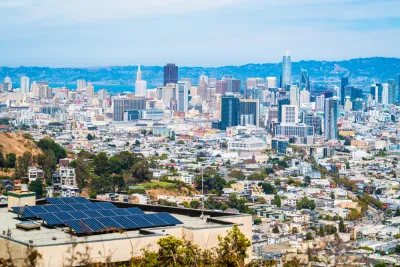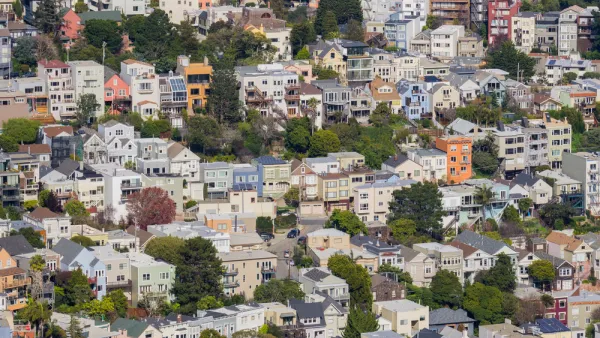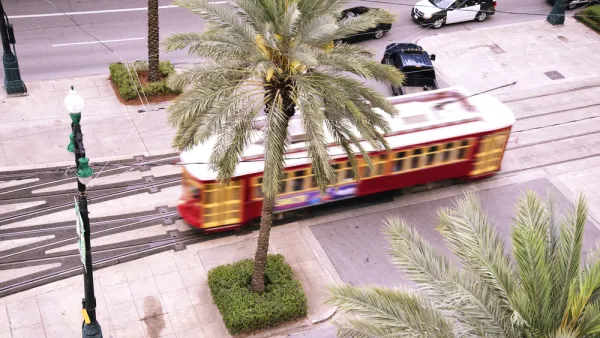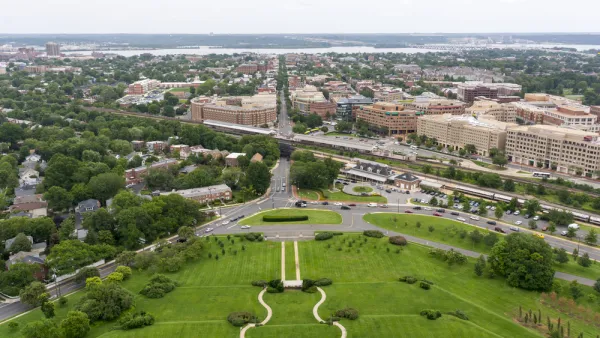An opinion published recently by the San Francisco Chronicle offers a provocative thought exercise: How did the Bay Area of 2070 achieve affordability, equity, sustainability and adaptation in the face of climate change, and new levels of prosperity?

Sarah Karlinsky, senior advisor at SPUR, pens an opinion piece for the San Francisco Chronicle [paywall] that lays out an ambitious vision for the San Francisco Bay Area. In a creative twist, Karlinsky imagines writing from the year 2070—when the Bay Area is thriving with sustainable transportation, affordable housing, and the demise of the systemic racism in the built environment.
According to Karlinsky's imagined future history, 2021 would prove a watershed moment for the Bay Area, emerging from the COVID pandemic with optimism but realizing that all was not well:
The process of change, according to Karlinsky, happened in 2022:
The events of this invented history include additional legislation that loosened zoning restrictions of housing in suburban locations. "Small apartment buildings, granny flats and affordable housing became the new suburban norm," according to Karlinsky.
Other reforms and innovations that helped changed the course of California's evolution include property tax reform, expanded funding mechanisms, a streamlined permitting system, electric buses, restored wetlands, all electric buildings, a second Transbay tube, freeway removal (removed in 2027), and a "green necklace" of parks around the Bay Area as a buffer from wildfires.
The first step is the hardest, explains Karlinsky, but it's possible. "We can live in a region that is affordable, sustainable, racially just and easy to get around. But to get there, we have to believe such a future is possible and insist that our elected leaders make that vision a reality."
FULL STORY: Greetings from 2070. The Bay Area is thriving. Here's how we staved off dystopia

National Parks Layoffs Will Cause Communities to Lose Billions
Thousands of essential park workers were laid off this week, just before the busy spring break season.

Retro-silient?: America’s First “Eco-burb,” The Woodlands Turns 50
A master-planned community north of Houston offers lessons on green infrastructure and resilient design, but falls short of its founder’s lofty affordability and walkability goals.

Delivering for America Plan Will Downgrade Mail Service in at Least 49.5 Percent of Zip Codes
Republican and Democrat lawmakers criticize the plan for its disproportionate negative impact on rural communities.

Test News Post 1
This is a summary

Test News Headline 46
Test for the image on the front page.

Balancing Bombs and Butterflies: How the National Guard Protects a Rare Species
The National Guard at Fort Indiantown Gap uses GIS technology and land management strategies to balance military training with conservation efforts, ensuring the survival of the rare eastern regal fritillary butterfly.
Urban Design for Planners 1: Software Tools
This six-course series explores essential urban design concepts using open source software and equips planners with the tools they need to participate fully in the urban design process.
Planning for Universal Design
Learn the tools for implementing Universal Design in planning regulations.
EMC Planning Group, Inc.
Planetizen
Planetizen
Mpact (formerly Rail~Volution)
Great Falls Development Authority, Inc.
HUDs Office of Policy Development and Research
NYU Wagner Graduate School of Public Service





























